#classical antiquity
Explore tagged Tumblr posts
Text

A Coign of Vantage (detail), 1895
Lawrence Alma-Tadema
#Lawrence Alma-Tadema#oil on canvas#romanticism#details#english art#british art#art#painting#art history#portrait#scene#classical antiquity#favorite#1890s
78 notes
·
View notes
Text

The Triumph of Light over Darkness by Franz von Matsch
#franz von matsch#art#light#darkness#supernatural#pagan#paganism#religious art#religion#gods#goddess#goddesses#torch#horse#wings#europe#european#classical antiquity#ancient greek#greek mythology#roman mythology#ancient rome#classical#classicism#sun#clouds#mythical creatures#winged horse#day#night
2K notes
·
View notes
Text


visited M.S. RAU for an exhibit opening || Instagram
#antique aesthetic#vintage aesthetic#art deco#classical antiquity#classical aesthetic#mignonne#2023#green
11K notes
·
View notes
Text
Child's Sock from Egypt, c.250-350 CE: this colorful sock is nearly 1,700 years old

This sock was discovered during excavations in the ancient city of Oxyrhynchus. It was likely created for a child during the late Roman period, c.250-350 CE.
Similar-looking socks from late antiquity and the early Byzantine period have also been found at several other sites throughout Egypt; these socks often have colorful, striped patterns with divided toes, and they were crafted out of wool using a technique known as nålbinding.

Above: a similar child's sock from Antinoöpolis, c.250-350 CE
The sock depicted above was created during the same period, and it was found in a midden heap (an ancient rubbish pit) in the city of Antinoöpolis. A multispectral imaging analysis of this sock yielded some interesting results back in 2018, as this article explains:
... analysis revealed that the sock contained seven hues of wool yarn woven together in a meticulous, stripy pattern. Just three natural, plant-based dyes—madder roots for red, woad leaves for blue and weld flowers for yellow—were used to create the different color combinations featured on the sock, according to Joanne Dyer, lead author of the study.
In the paper, she and her co-authors explain that the imaging technique also revealed how the colors were mixed to create hues of green, purple and orange: In some cases, fibers of different colors were spun together; in others, individual yarns went through multiple dye baths.
Such intricacy is pretty impressive, considering that the ancient sock is both “tiny” and “fragile."
Given its size and orientation, the researchers believe it may have been worn on a child’s left foot.

Above: another child's sock from Al Fayyum, c.300-500 CE
The ancient Egyptians employed a single-needle looping technique, often referred to as nålbindning, to create their socks. Notably, the approach could be used to separate the big toe and four other toes in the sock—which just may have given life to the ever-controversial socks-and-sandals trend.
Sources & More Info:
Manchester Museum: Child's Sock from Oxyrhynchus
British Museum: Sock from Antinoupolis
Royal Ontario Museum: Sock from Al Fayyum
Smithsonian Magazine: 1,700-Year-Old Sock Spins Yarn About Ancient Egyptian Fashion
The Guardian: Imaging Tool Unravels Secrets of Child's Sock from Ancient Egypt
PLOS ONE Journal: A Multispectral Imaging Approach Integrated into the Study of Late Antique Textiles from Egypt
National Museums Scotland: The Lost Sock
#archaeology#artifact#history#anthropology#child's sock#ancient textiles#ancient egypt#roman egypt#fabric arts#knitting#fashion#naalebinding#art#classical antiquity#children in archaeology#natural dyes#wool#yarn#ancient clothing#children#roman#sewing#egyptology#cute little stripy socks
1K notes
·
View notes
Text
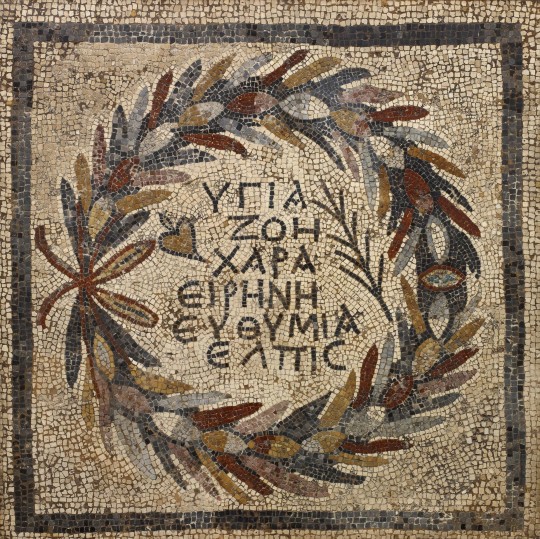
Late Roman stone mosaic from the Greek city of Halicarnassus, Caria (modern Bodrum, Turkey), dated 4th century AD, now in the British Museum. A coloured laurel wreath encloses a Greek inscription with the following words:
ΥΓΙΑ "Health" ΖΟΗ "Life" ΧΑΡΑ "Joy" ΕΙΡΗΝΗ "Peace" ΕΥΘΥΜΙΑ "Happiness" ΕΛΠΙϹ "Hope"
🏛️: © The Trustees of the British Museum
#classics#classical antiquity#ancient greece#classical archaeology#halicarnassus#caria#british museum#ancient greek
1K notes
·
View notes
Text



Hera and Aphrodite
Boeotian-Kabeiric skyphos
450-400 BC
#greek vase#ancient art#Hera#aphrodite#painting#classical antiquity#historical art#classical art#women’s history#greek mythology#greek myth art#judgement of Paris#history#art#black womanist#black femininity#black feminism#black girls#black history#black art#black women#black womanism#black woman
151 notes
·
View notes
Text
“The bitumen seal was key in preserving the patchouli’s chemical signature. Not only did the seal keep the fragrance inside the bottle, but it also trapped the perfume molecules through a process called adsorption."
I love that rich-ass Romans probably smelled like a head shop.
702 notes
·
View notes
Text
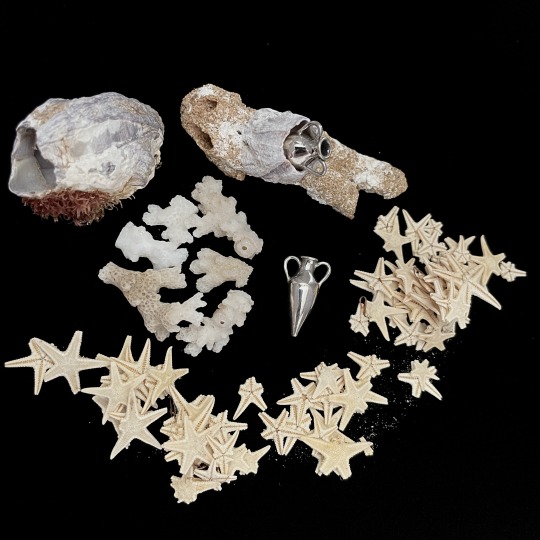
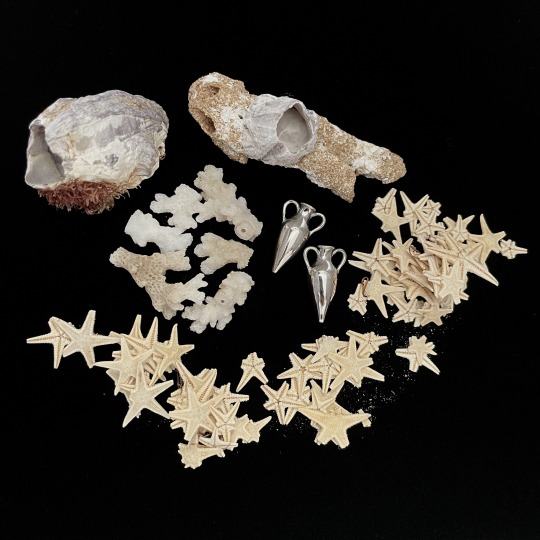
Amphora by Moon and Serpent
#moon and serpent#amphora#handmade jewelry#artists on tumblr#archaeology#history#ocean aesthetic#mermaidcore#artifacts#classical antiquity#ancient greece#ancient rome
355 notes
·
View notes
Text
So most people who enjoy Greek Mythology are aware that Aphrodite has 2 origin stories; one being the daughter of Zeus (what i find to be the more common contemporary view) and the other being the spawn of Uranus (the more common historic view although both coexisted in Antiquity).
What I found interesting while reading 'The Symposium' by Plato was that there is a third historic interpretation, that there were 2 Aphrodite's; the spawn of Uranus being the embodiment of mature love and the child of Zeus being the embodiment of young love (what we'd today call love and lust).
I like this reading because its a fun distinction and also ties nicely into this duality of the gods we see in the mythology. In the mythos, often two gods shared the same dominion which the Greeks used to emphasise certain qualities;
Apollo and Helios both are the gods of the Sun. Helios representing the literal sun and Apollo representing the metaphorical sun (stuff like light, beauty, etc...).
Athena and Ares both are gods/godesses of war. Ares representing the brutality of war (the death, suffering, destruction...) and Athena representing the beauty of war (strategy, honor, skill...).
#greek mythology#symposium#plato#classical antiquity#aphrodite#apollo#helios#athena#ares#zeus#uranus
53 notes
·
View notes
Text
Soooo just found out they’re shutting down the classics department at my uni, which was the last one in my country, to save money. Great. You’re looking at the last danish philologist folks. I get to finish my bachelors and my candidate degrees, but that’s it and then all my professors will be out of work. So if anyone has a good suggesting for a uni (anywhere in the world) to do a PhD in classical languages at, do tell😅😅
#classical studies#ancient Greek#latin#university student#uni#classical antiquity#classics student#Greek student#classical philology#classical philologist#classical archaeology
50 notes
·
View notes
Text

Frescoed bust of crowned Herakles bearing a club, from Herculaneum, c. 45-79
Museo Archeologico Nazionale di Napoli
Photo by Charles Reeza
429 notes
·
View notes
Text

The Signal, 1899 John William Godward
#John William Godward#english art#neo classicism#classical antiquity#art#painting#art history#fashion#portrait#academicism#favorite artists#fashion history#colors#oil on canvas#that fabric#1890s#red
626 notes
·
View notes
Text

Andromeda by Arthur Rackham
#arthur rackham#art#andromeda#cetus#greek mythology#mythological#dragon#dragons#serpent#serpents#sea#mythical creatures#monster#monsters#beasts#damsel in distress#classical antiquity#ancient greece#ancient greek#europe#european#sea monsters#sea dragons#sea serpents#folklore#mythology
3K notes
·
View notes
Text

bacchanale
#dark academia#light academia#antique aesthetic#greek myth aesthetic#ancient greek aesthetic#black dark academia#classical antiquity#antique academia#bacchanalian#classical academia#mine
4K notes
·
View notes
Text
2,000-Year-Old Fayum Portraits from Roman Egypt: also known as "mummy portraits," these funerary paintings were often fastened to the coffins of the people they depicted
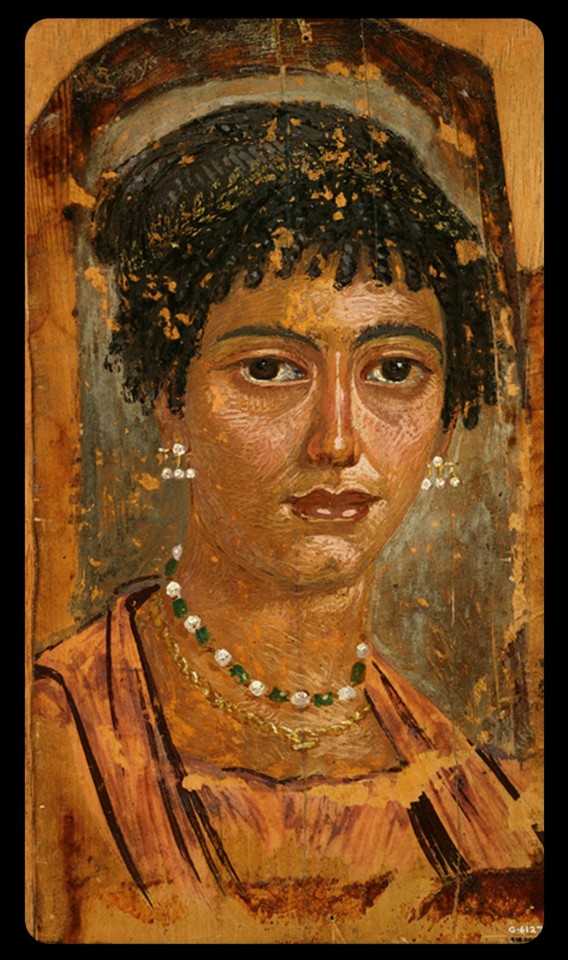
Above: Fayum portrait of a woman from Roman-occupied Egypt, c.100-110 CE
Fayum portraiture was a popular funerary practice among the upper-class families of Roman Egypt from about 50 CE to 250 CE. Given the high mortality rates for children during this period, many of these portraits depict children and youths, but adults were often featured, too.
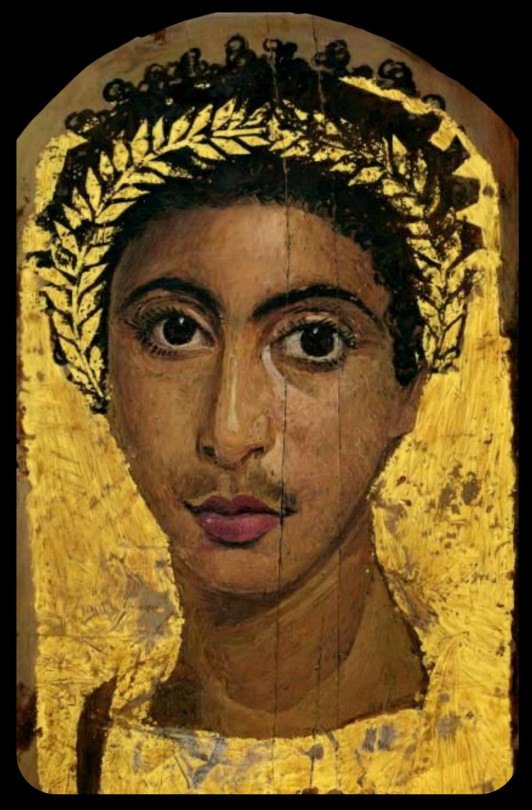
Above: portrait of a youth wearing a golden wreath, c.130-150 CE; the wreath and the background of the portrait are both gilded
The population of the Faiyum Delta, where most of these portraits were found, largely contained individuals with both native Egyptian/North African and Greek heritage. The Greek lineages can be traced back to the Ptolemaic period, when the Greeks gained control of Egypt and began to establish settlements throughout the region, gradually leading to a cultural diffusion between the Greek and Egyptian populations. The Romans eventually took control of Egypt in 31 CE, absorbing it into the Roman Empire and colonizing much of North Africa, but the demographics of the Faiyum Delta remained largely unchanged.
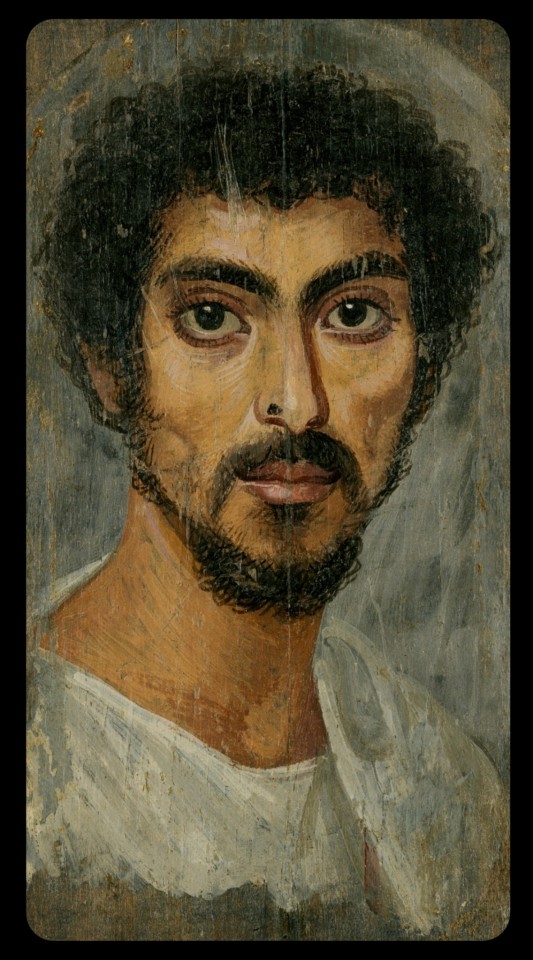
Above: portrait of a man with a mole on his nose, c.130-150 CE
Many of these Fayum portraits reflect the same blend of ethnic and cultural roots, depicting individuals with both Greek and native Egyptian heritage (a claim that is supported by both archaeological and genetic evidence). Some portraits may also depict native Egyptians who did not have any European ancestry, but had been integrated into Greco-Roman society.
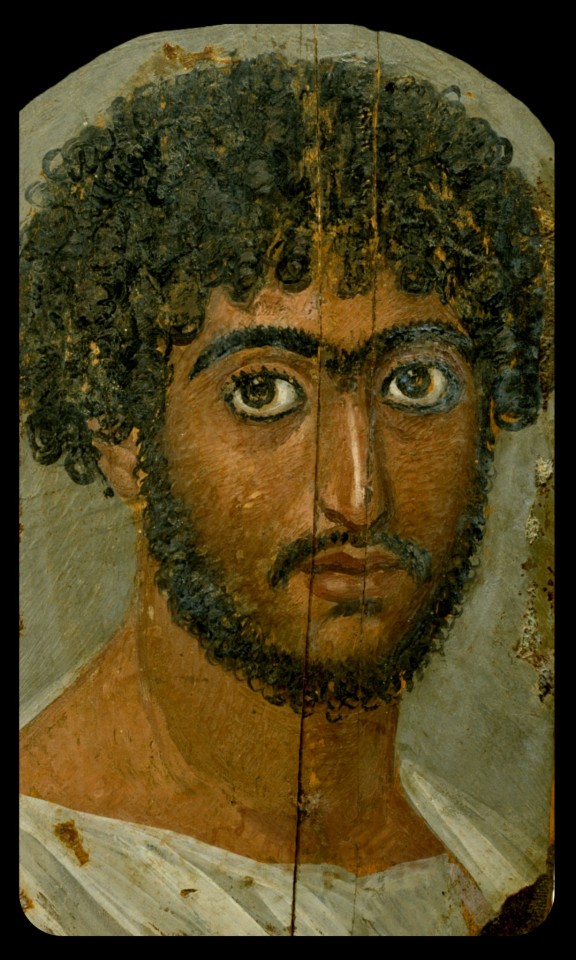
Above: portrait of a bearded man, c.170-180 CE
These representations of native Egyptians provide us with unique insights into the actual demographics of Roman-occupied Egypt (and the ancient world at large). Non-European peoples are rarely included in depictions of the classical world; it's also interesting to see the blend of cultural elements that these portraits represent.

Above: portrait of a priest of Serapis, c.140-160 CE; the man in this portrait is shown wearing a fillet/crown that bears the seven-pointed star of the Greco-Egyptian god, Serapis
As this article explains:
In the 1800s and early 1900s, Western art historians didn’t know what to make of these portraits. Scholars of Roman history labeled them Egyptian. Scholars of Egyptian history labeled them Greco-Roman. These binary academic classifications failed to capture the true complexity of the ancient (or, indeed, modern) Mediterranean. In reality, Fayum portraits are a syncretic form, merging Egyptian and Greco-Roman art and funerary practices. They reflect the cosmopolitanism of both Roman and Egyptian history.
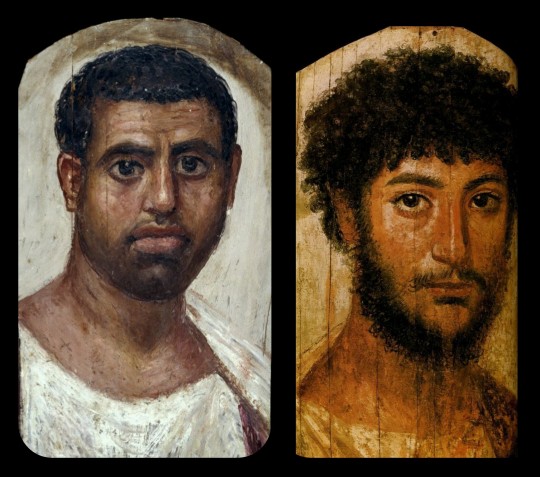
Above: portrait of a man, c.80-100 CE (left); portrait of a bearded officer, sometimes referred to as "Perseus," c.130-175 CE (right)
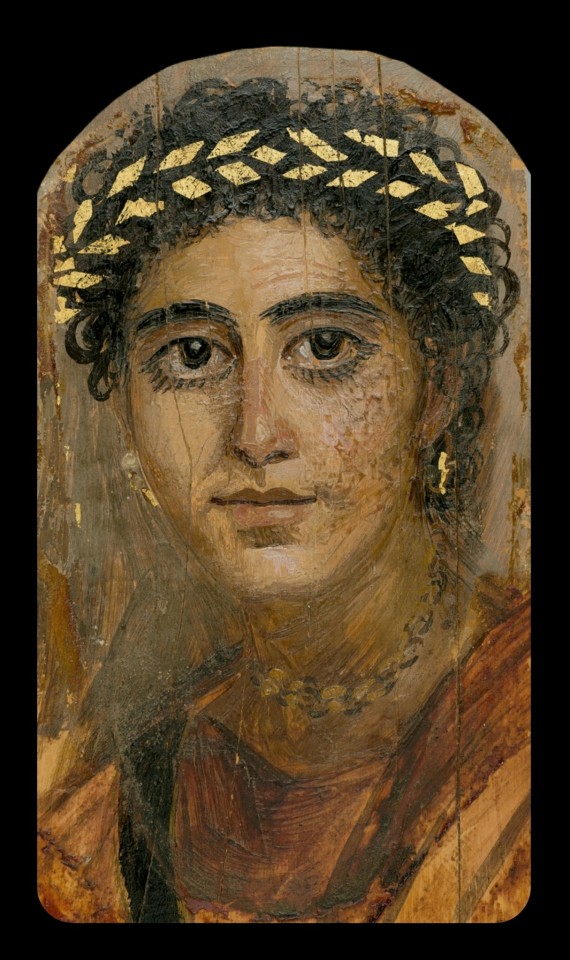
Above: portrait of a young woman in red, c.90-120 CE
Nearly 1,000 of these portraits are currently known to exist.
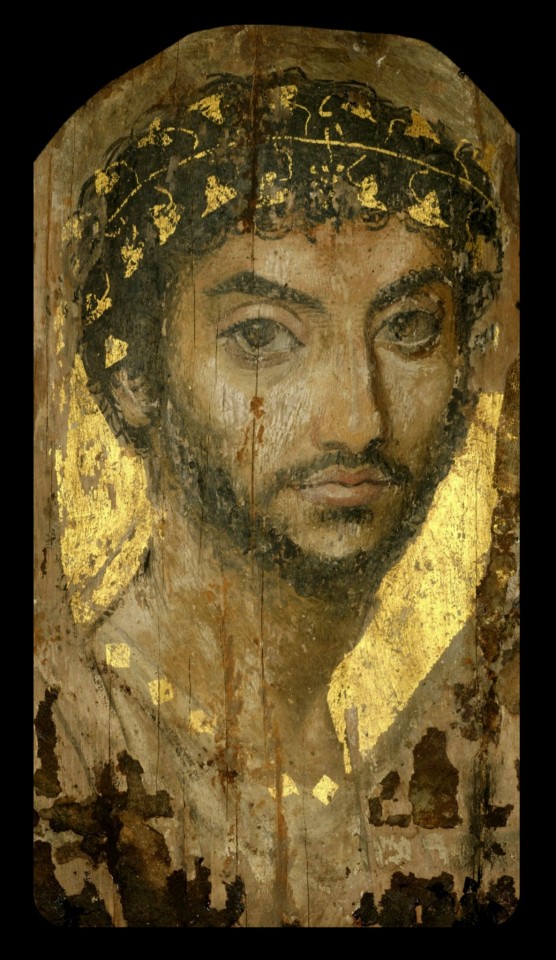
Above: portrait of a man wearing a gilded ivy wreath, c.100-150 CE
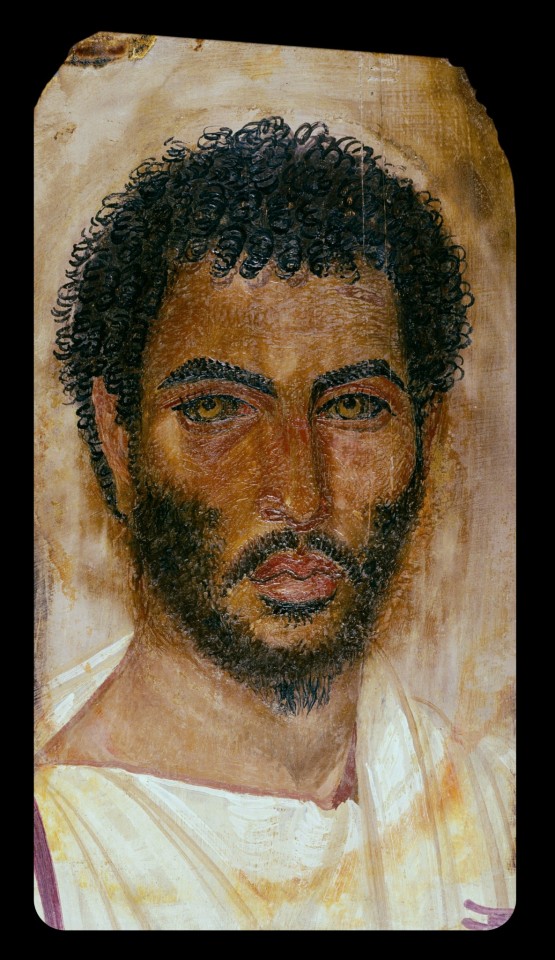
Above: portrait of a bearded man, c.150-170 CE
Sources & More Info:
Curationist: Fayum Portraits
Harvard Art Museums: Giving the Dead their Due: an Exhibition Re-Examines Funerary Portraits from Roman Egypt
Getty Museum: APPEAR Project
Getty Museum: Faces of Roman Egypt
National Geographic: Ancient Egypt's Stunning, Lifelike Mummy Portraits
The Athens Centre: The Myth of Whiteness in Classical Sculpture
Forbes: Whitewashing Ancient Statues: Whiteness, Racism and Color in the Ancient World
#archaeology#artifact#anthropology#history#ancient history#art#fayum portraits#roman egypt#ancient rome#ethnography#painting#portrait#north africa#people of color#egypt#religion#greco roman#greek#classical antiquity#fayum#mummy portraits#romano egyptian#representation
395 notes
·
View notes
Text

A black figure kalpis depicting the poet Sappho (ΦΣΑΦΟ) holding a barbiton, an ancient stringed instrument similar to a lyre. Attributed to the eponymous Sappho Painter, active in Attica c. 510 to 490 BC.
🏛️: National Museum, Warsaw
#classics#classical antiquity#ancient greece#ancient greek#greece#greek#classical archaeology#greek archaeology#sappho#tenth muse#the poetess#national museum warsaw#sapphoposting
986 notes
·
View notes